Kathmandu Durbar Square
Kathmandu Durbar Square, also known as Basantapur Durbar Kshetra, is at the heart of Kathmandu's historic and cultural life. This UNESCO World Heritage Site is famed for its exquisite architecture and vibrant atmosphere, capturing the essence of Nepal's rich heritage.
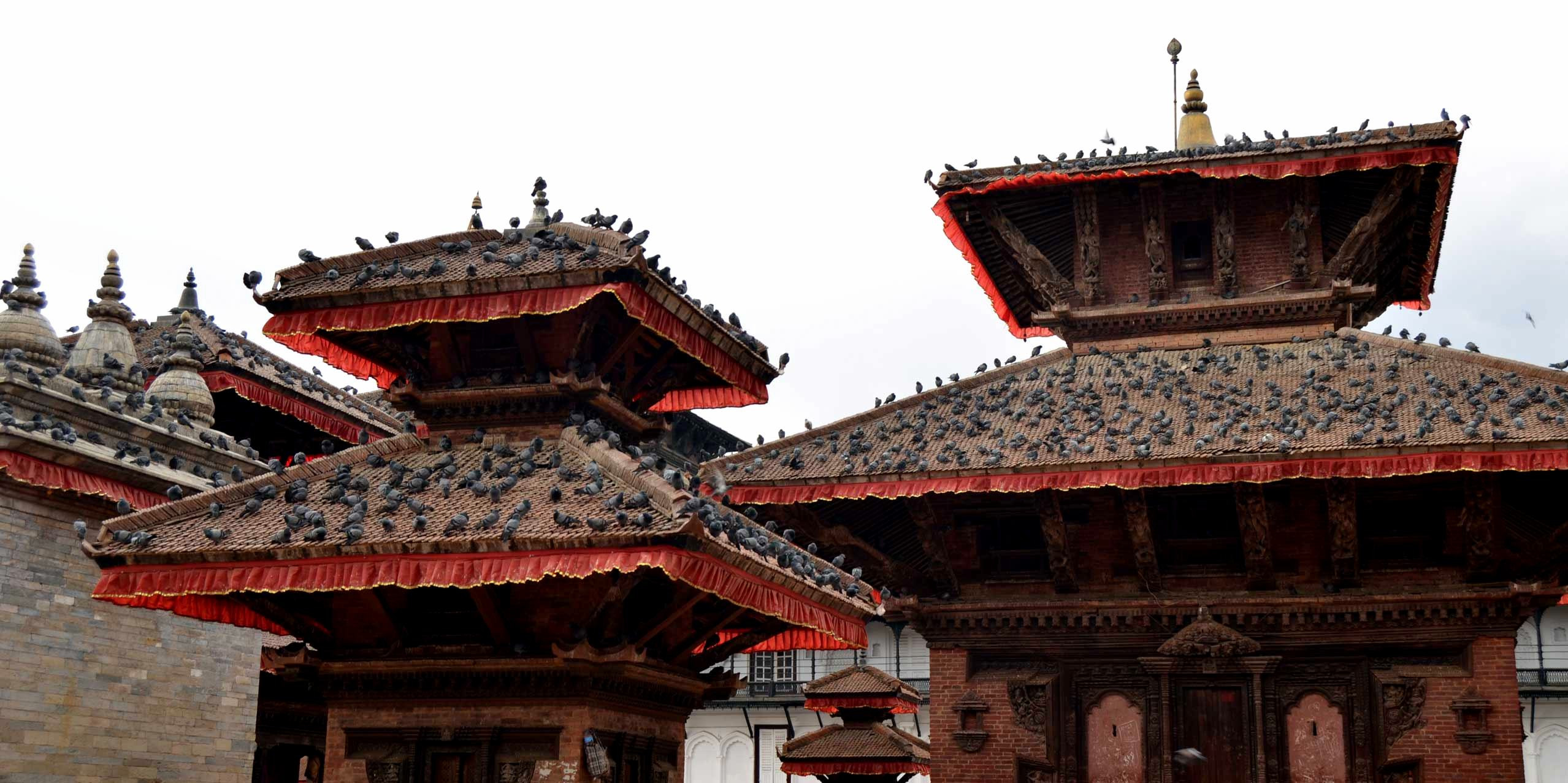
-
Historical Significance: Historically, Kathmandu Durbar Square was the place where the city's kings were crowned and legitimized, and it served as the royal Nepalese residence until the 19th century. The square is surrounded by courtyards and temples, dating back to the 12th to 18th centuries, which reflect the city’s storied past and architectural evolution.
-
Architectural Marvels: The architecture of Kathmandu Durbar Square is a mix of wood, metal, and stone craftsmanship. The site includes the Hanuman Dhoka Palace Complex, which was expanded by King Pratap Malla in the 17th century. One of the most visually striking buildings is the Taleju Temple, built by King Mahendra Malla in 1549 A.D. The square is also known for its towering pagoda structures, intricately carved wooden windows, and statues of gods and goddesses.
-
Cultural Hub: Kathmandu Durbar Square is not just a historical site but also a living, breathing part of Kathmandu. It plays host to various festivals, rituals, and ceremonies that are held throughout the year. Most notably, the square is a focal point during the Indra Jatra and Dashain festivals. The Kumari Bahal, residence of the living goddess Kumari, is also located in this square, adding a layer of mystical allure to the place.
Visiting Kathmandu Durbar Square provides an insightful glimpse into Nepalese culture and history, making it a must-visit for anyone traveling to Kathmandu. Whether you're exploring its ancient palaces, observing local festivities, or simply soaking in the atmosphere, Kathmandu Durbar Square offers a unique and enriching experience.
Patan Durbar Square
Patan Durbar Square, located in the heart of Lalitpur, Nepal, is a focal point of both history and culture, distinguishing itself with its architectural excellence and artistic heritage. This UNESCO World Heritage Site exemplifies the height of Newar architecture and is an essential destination for anyone visiting the Kathmandu Valley.
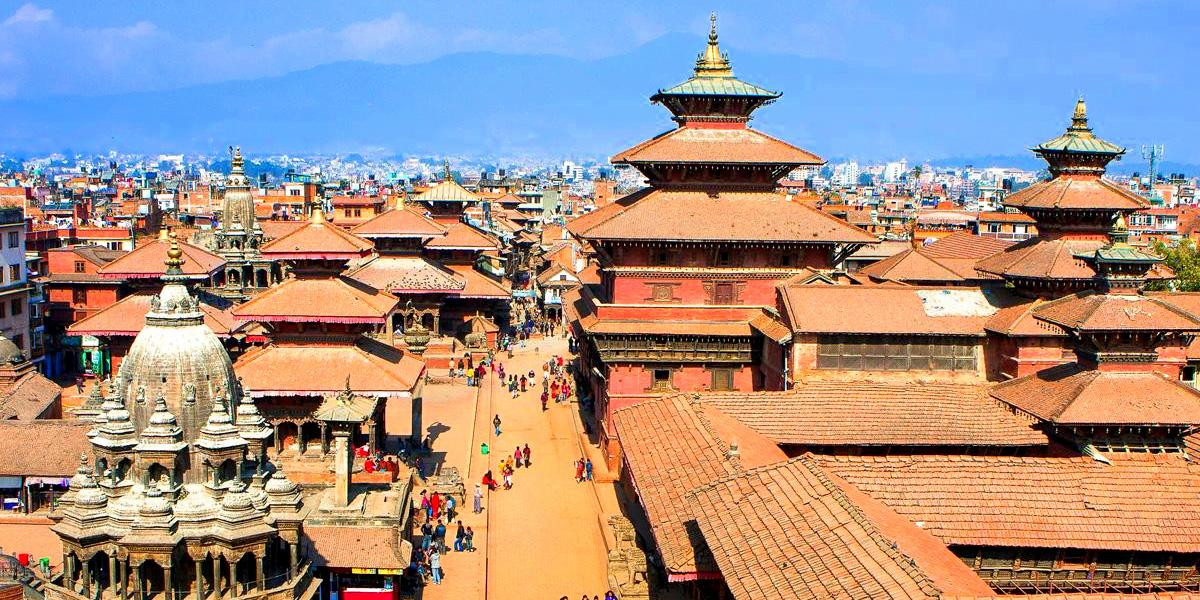
-
Architectural and Historical Significance: Patan Durbar Square is surrounded by ancient buildings that are beautifully decorated with intricately carved windows and panels. These structures date back to several centuries and showcase the skills of the Newar artisans of that time. The square itself was once the royal palace of the Malla kings and is a testament to the city's historical importance and opulence. Among the notable structures in the square, the Royal Palace complex, which houses a museum, stands out for its collection of artifacts and artworks that speak volumes of the medieval city-state’s history. The museum’s courtyards—Mul Chowk, Sundari Chowk, and Keshav Narayan Chowk—are superb examples of classical Nepalese architecture.
-
Cultural Vibrancy: The square is not just a site of historical significance but also a lively center of daily activity and cultural events. It hosts various festivals, religious and cultural celebrations, most notably the annual Krishna Janmasthami. Artists, craftsmen, and traders are often seen here, contributing to the vibrant local culture that attracts both locals and tourists alike.
-
Temples and Shrines: Patan Durbar Square is dotted with numerous temples and shrines. Notable among these are the Krishna Mandir, built entirely of stone in the Shikhara style in the 17th century by King Siddhi Narsingh Malla, and the Bhimsen Temple, which honors the god of trade and business. These structures are not only places of worship but also serve as prime examples of the religious devotion and architectural ingenuity that define the Newar culture.
Visiting Patan Durbar Square offers a deep dive into the artistic soul of Nepal, making it a must-visit for anyone interested in the convergence of history, culture, and art. Whether you're admiring the architectural details, exploring the royal palace, or soaking in the spiritual and communal atmosphere, Patan Durbar Square enriches your understanding of Nepalese heritage.
Bhaktapur Durbar Square
Bhaktapur Durbar Square, situated in the ancient city of Bhaktapur, also known as Bhadgaon or Khwopa, is one of the most striking architectural showpieces of the Kathmandu Valley, illustrating the grandeur of the Malla dynasty that ruled Nepal from the 12th to the 18th century. This UNESCO World Heritage Site is renowned for its exquisite art, colorful festivals, vibrant culture, and remarkable architectural designs.
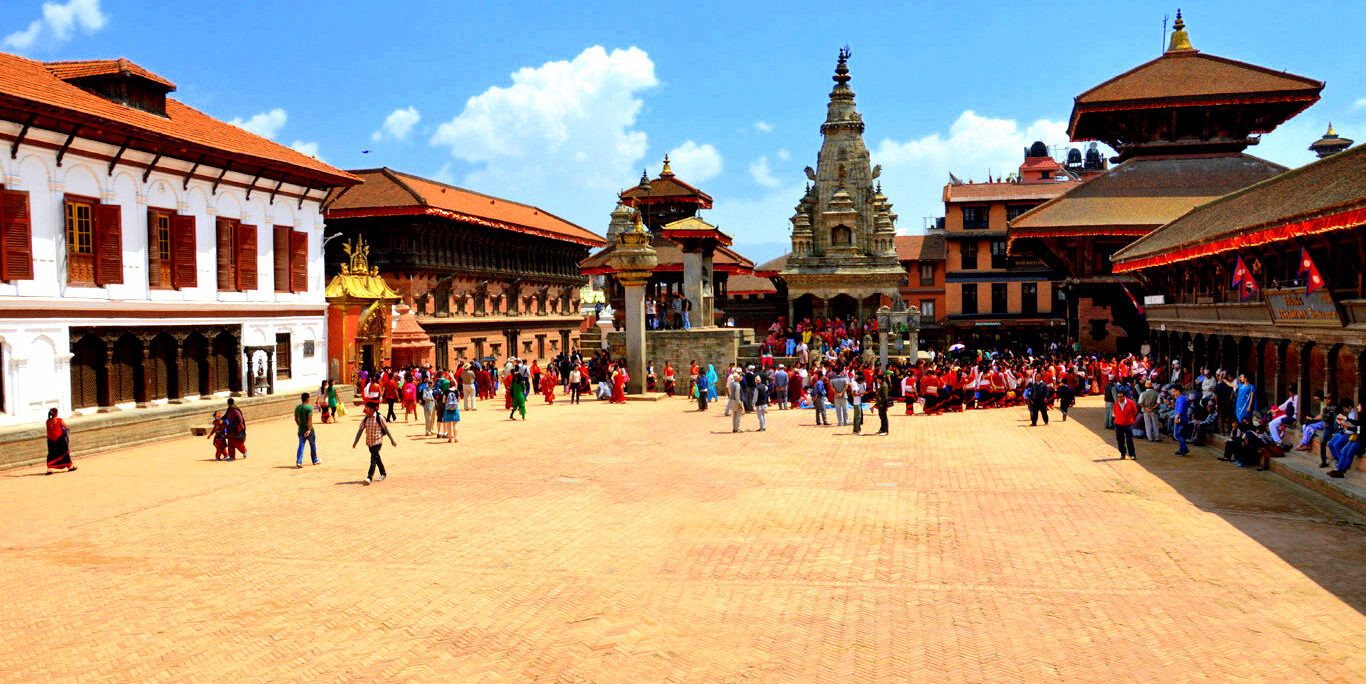
-
Historical and Cultural Significance: The square is an authentic showcase of the Malla dynasty’s devotion to art and culture, seen through the stunning courtyards, palatial buildings, and towering temples that make up this historical complex. Each structure in Bhaktapur Durbar Square tells a story of medieval Nepalese culture, religion, and politics that is preserved through continuous restoration efforts.
-
Architectural Highlights: Among the most notable structures within Bhaktapur Durbar Square is the Nyatapola Temple, which stands as the tallest pagoda-style temple in Nepal, beautifully adorned with detailed wood carvings and statues of gods and mythical beasts. Another significant structure is the 55 Window Palace, famous for its elaborate woodwork and artistic craftsmanship. This palace also houses the National Art Gallery, which contains ancient paintings, manuscripts, and exquisite pieces of art.
-
The Heartbeat of Local Life: The square remains a focal point for local life and festivals, particularly during the Nepalese New Year celebrations and the Bisket Jatra festival, the latter being one of the most spectacular in the region. The local community is deeply involved in maintaining the square's vibrancy, contributing to various cultural activities that attract tourists and devotees alike.
Bhaktapur Durbar Square is not just a tourist destination but a living museum of Hindu culture, festivity, and Nepalese medieval architecture. Its well-preserved urban fabric, free from the intrusion of modern vehicles, makes it a unique place, offering insights into a lifestyle that revolves around traditional and historical values. This preservation of ancient traditions makes Bhaktapur Durbar Square a must-visit for anyone wanting to experience the true essence of Nepalese culture and history.
Swayambhunath Stupa (Monkey Temple)
Swayambhunath Stupa, affectionately known as the Monkey Temple due to its large population of resident monkeys, stands as one of the most revered and iconic Buddhist sites in Nepal. Perched atop a hill in the Kathmandu Valley, it offers not only spiritual significance but also panoramic views of the surrounding city and landscapes.
.jpg)
-
Spiritual and Historical Significance: Swayambhunath is one of the oldest religious sites in Nepal, with history that traces back over 1,500 years. According to legend, the stupa originated when the valley was formed out of a primordial lake more than 2,000 years ago. This ancient stupa is a profound example of Buddhist symbolism, its dome representing the earth and the spire symbolizing the thirteen steps to enlightenment.
-
Architectural Details: The stupa itself is a beautiful structure, crowned with a gilded spire painted with the eyes of the Buddha, looking out in all four cardinal directions, representing the omnipresent nature of the Buddha. The base of the spire is made up of three decreasing platforms, which denote Earth, Water, and Fire. Each side of the base is adorned with pairs of mythical creatures guarding the temple, while prayer wheels encircle the base, which pilgrims spin as they walk clockwise around the stupa.
-
Cultural Hub: Swayambhunath is a melting pot of culture and religion, frequented by Buddhists and Hindus alike. The stupa complex includes a variety of shrines and temples, some of which date back to the Licchavi period. The site is particularly lively during Buddhist festivals like Losar (Tibetan New Year) and Buddha Jayanti (the celebration of the Buddha's birth, enlightenment, and death).
-
Visitor Experience: Visiting Swayambhunath offers a tranquil retreat from the bustling city below. The atmosphere is serene, punctuated by the sounds of chiming bells, chattering monkeys, and the soft murmurs of prayer. The site provides not only a spiritual experience but also the opportunity to witness breathtaking sunrises or sunsets over Kathmandu Valley.
Swayambhunath Stupa remains a must-visit for anyone traveling to Nepal, promising a blend of spiritual insight, historical exploration, and natural beauty, making it a true jewel in the crown of Kathmandu's cultural heritage.
Boudhanath Stupa
Boudhanath Stupa is one of the largest and most significant Buddhist stupas in the world, located in the outskirts of Kathmandu, Nepal. It stands as a monumental landmark and a beacon of Buddhist faith and heritage, attracting pilgrims and tourists from around the globe.
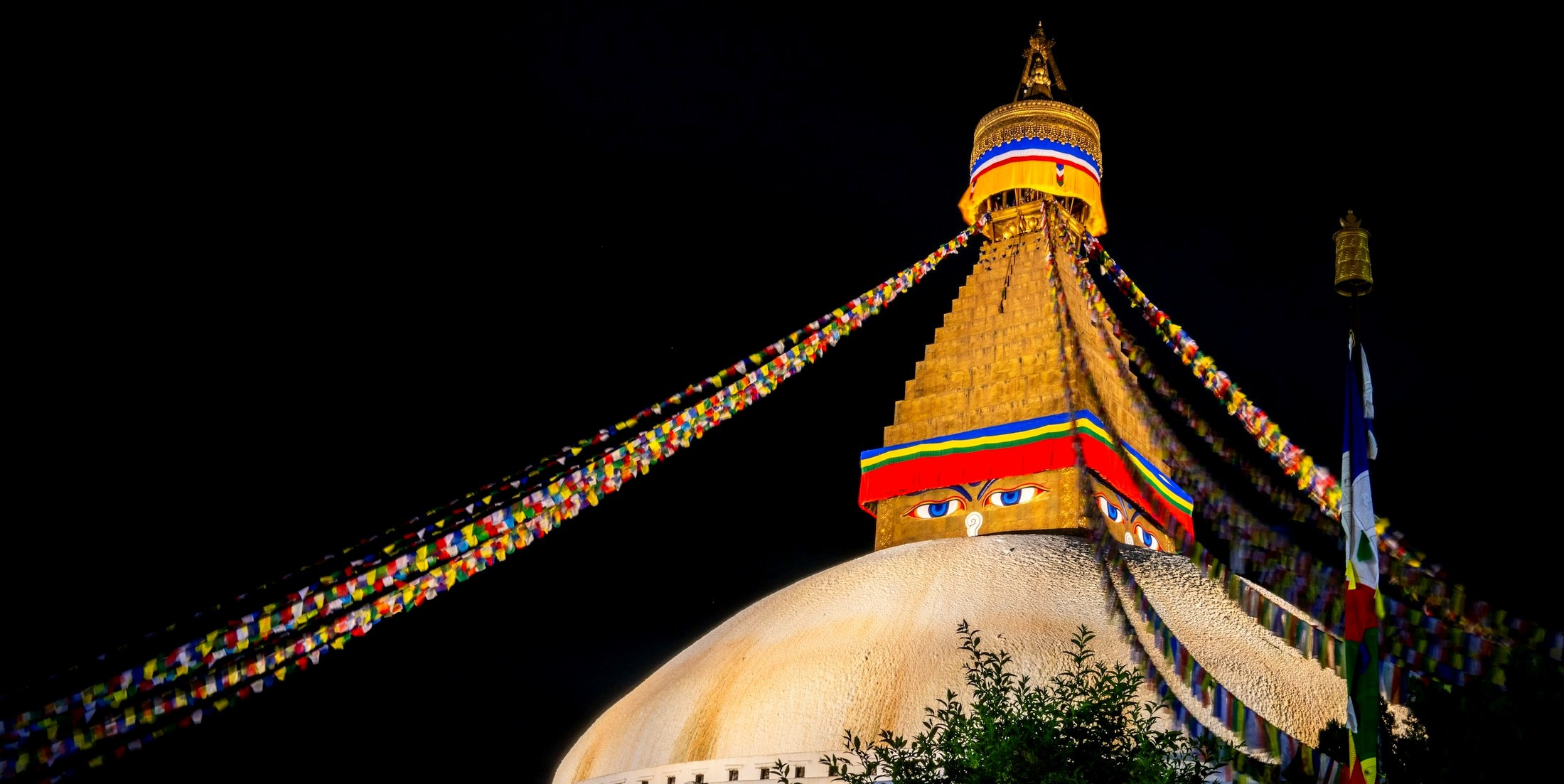
-
Historical Significance: Dating back to the 5th century, Boudhanath holds immense religious significance in Tibetan Buddhism. The stupa is said to entomb the remains of Kassapa Buddha, an ancient Buddha of the Buddhist tradition. Its origins are linked to the migration of Tibetan traders and the spread of Buddhism into Nepal, making it a vital center of Tibetan culture in Kathmandu.
-
Architectural Splendor: The stupa's massive mandala makes it one of the largest spherical stupas in Nepal and indeed the world. The structure is built in a three-level mandala style, with a massive dome at its base representing the entire world. Atop the dome, there is a square tower with the omnipresent eyes of the Buddha on all four sides, symbolizing his all-seeing nature. These eyes are central to the stupa’s iconography, providing a constant reminder of the Buddha’s presence and watchfulness. Above the eyes, thirteen tiers represent the stages to enlightenment leading to the gilded canopy at the top.
-
Cultural Hub: Boudhanath is not just a passive monument but a vibrant hub of culture and spirituality. The area surrounding the stupa is lined with monasteries and Tibetan shops selling religious artifacts, thangka paintings, and traditional Tibetan jewelry. It serves as a living center of faith, with daily rituals, prayers, and the circumambulation of monks, pilgrims, and tourists spinning prayer wheels.
-
Festivals and Celebrations: The stupa is particularly spectacular during Buddhist festivals like Losar (Tibetan New Year) and Buddha Jayanti (the birthday of Buddha), when it is adorned with colorful prayer flags, and the air is filled with the scent of incense and the sounds of Buddhist chants. These festivals attract thousands of pilgrims who perform kora (circumambulation) and engage in prayer and meditation..
-
Visitor Experience: Visitors to Boudhanath can immerse themselves in a tranquil atmosphere that offers a profound sense of peace and contemplation. The stupa's massive scale and exquisite detail are best appreciated up close, whether you're observing from the ground level or viewing from the surrounding terraces that offer a panoramic vista of the entire complex.
Visiting Boudhanath Stupa is an enlightening experience, offering insights into Buddhist philosophy, architectural brilliance, and the vibrant cultural tapestry of Nepal. It remains a must-visit for anyone seeking to understand the spiritual landscape of the Kathmandu Valley.
Pashupatinath Temple
Pashupatinath Temple, located on the banks of the Bagmati River in Kathmandu, Nepal, is one of the most sacred Hindu temples of Lord Shiva in the world. It serves as the seat of the national deity, Lord Pashupatinath, and is a significant destination for devotees from across the globe, especially followers of Hinduism.
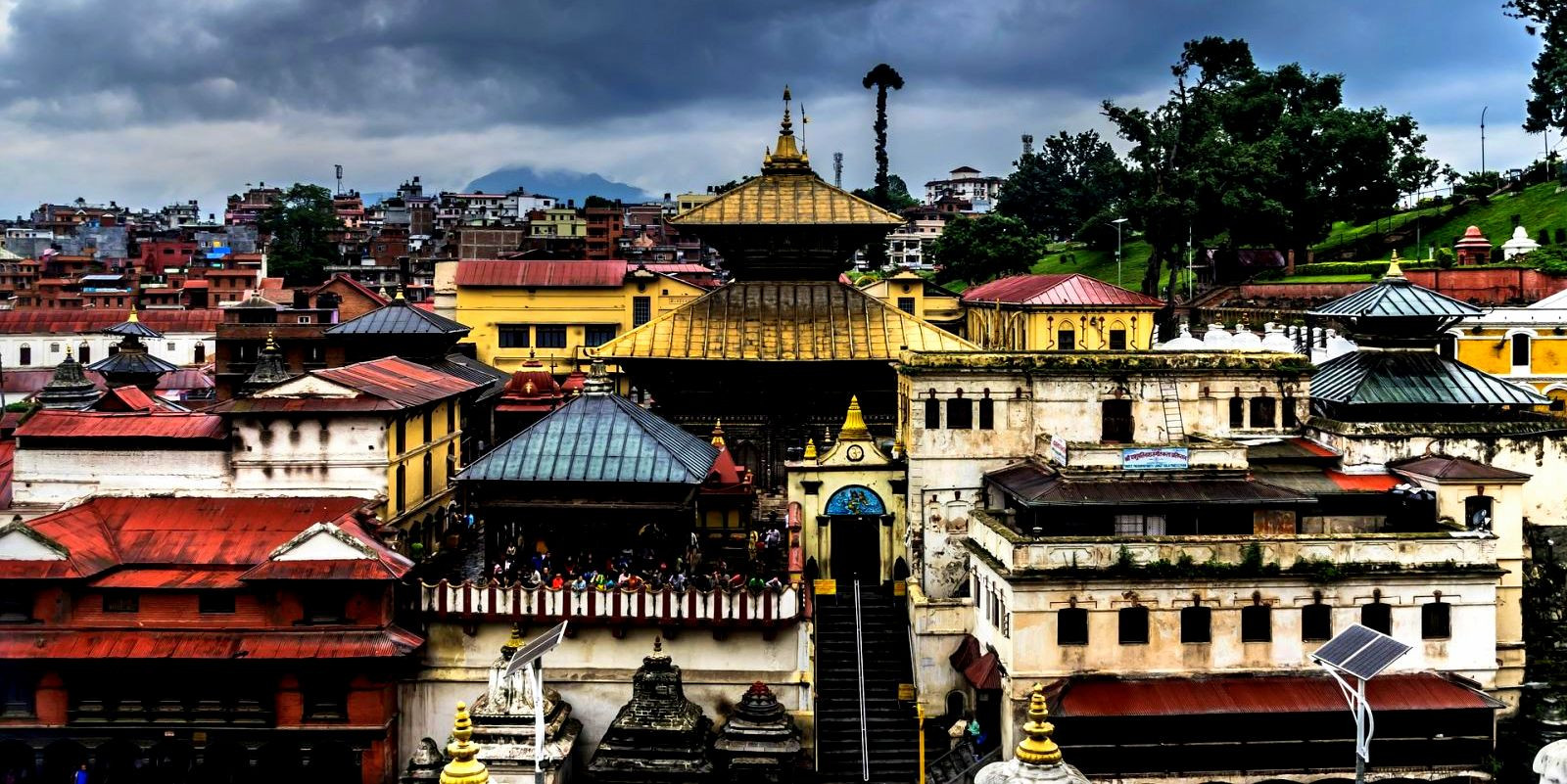
-
Spiritual and Historical Significance: The temple's origins trace back to the 5th century, and it has been an important religious site since then, although the current structure was built in the 17th century. Pashupatinath is considered one of the eight sacred places of Hindu Lord Shiva on the subcontinent, making it a part of the sacred cultural landscape of Kathmandu Valley.
-
Architectural Details: The main temple structure is a large double-roofed pagoda made of gold-plated copper and wood. On the outside, it is adorned with intricate carvings of various deities and scenes from Hindu mythology. Inside, the sanctum sanctorum houses a sacred lingam, a symbolic representation of Lord Shiva. The temple complex includes numerous other smaller temples, ashrams, images, and inscriptions dating back centuries.
-
Cultural and Ceremonial Hub: Pashupatinath Temple is not only a place of worship but also a key site for Hindu rituals, particularly those related to the life cycle, such as birth and death. The ghats (steps leading to the river) adjacent to the temple are well-known for being used for cremations. Hindus believe that being cremated here provides an immediate gateway to liberation from the cycle of birth and death.
-
Festivals and Celebrations: The temple plays a central role during major Hindu festivals, including Maha Shivaratri, when thousands of devotees visit the temple. During this festival, the temple complex becomes a hive of activity with sadhus (holy men), pilgrims, and local visitors participating in overnight vigils, singing hymns, and offering prayers to Lord Shiva.
-
Visitor Experience: Visitors to Pashupatinath are greeted by the sight of colorful sadhus, the sound of temple bells, and the rich aroma of incense. While the main temple is only accessible to Hindus, the surrounding complex offers plenty for non-Hindu visitors to see, including the beautifully crafted temples, the ritualistic activities at the ghats, and occasional cultural performances.
The experience of visiting Pashupatinath Temple is deeply moving, offering insight into Nepalese spiritual traditions and the enduring significance of religious practice in the daily lives of the Nepalese people. It is a profound place that embodies the essence of devotion and cultural heritage, making it a must-visit for anyone traveling to Kathmandu.
Thamel Area
The Thamel Area, nestled in the heart of Kathmandu, Nepal, is a bustling tourist hub known for its vibrant streets, diverse cultural mix, and dynamic nightlife. Thamel has long been the go-to spot for tourists and trekkers alike, serving as a prelude to the adventures that lie in the Nepalese highlands.
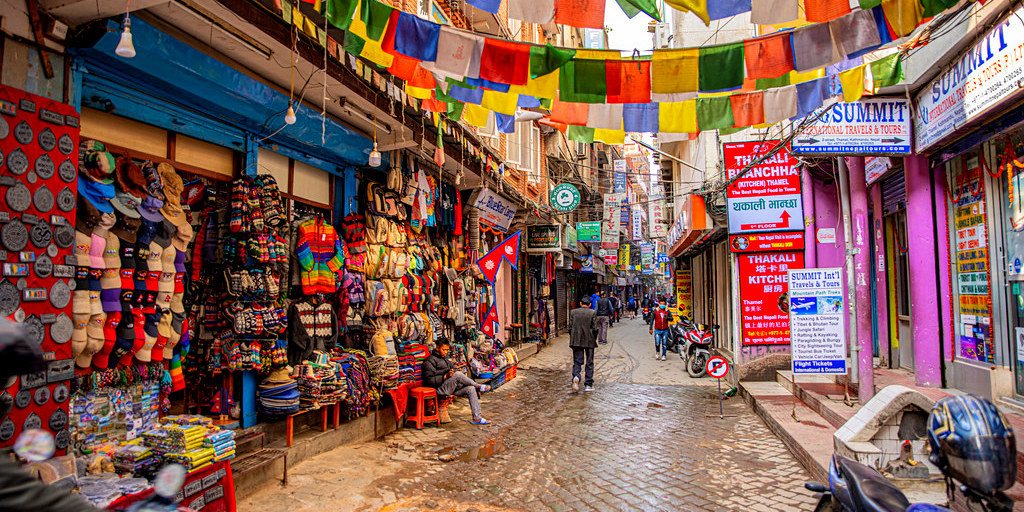
-
Cultural and Commercial Hub: Thamel is often considered the commercial center of Kathmandu, where East meets West. The narrow, winding streets are lined with shops selling everything from trekking gear and handmade crafts to books and musical instruments. This eclectic district is also known for its variety of restaurants, cafes, and bars that cater to all tastes and preferences, offering both local Nepalese cuisine and international dishes.
-
Nightlife and Entertainment: After dark, Thamel transforms into a lively nightlife destination. Bars and clubs come alive with music ranging from traditional Nepalese folk to contemporary Western beats. It's a place where travelers can mingle with locals and other tourists, making it a melting pot of cultures and experiences.
-
Shopping and Souvenirs: Shopping in Thamel is a delight for those looking to take a piece of Nepal back home. The area is renowned for its colorful bazaars and street vendors selling a wide array of handicrafts, pashminas, Thangkas, and unique jewelry. Bargaining is commonplace, adding to the fun and excitement of shopping here.
-
Accommodations: Thamel offers a range of accommodations, from budget hostels to luxurious hotels, making it accessible for travelers of all types. Its central location makes it an ideal base for exploring the wider Kathmandu Valley and beyond.
-
Traveler-Friendly Amenities: Recognizing the needs of international visitors, Thamel is equipped with numerous amenities such as currency exchange offices, travel agencies, and spas. It also has a reputation for being relatively safe, although visitors are advised to be cautious with their belongings due to the crowded nature of the area.
-
Cultural Experiences: Thamel is not just about shopping and nightlife; it also offers cultural experiences such as live music performances, gallery exhibitions, and food tours that help visitors understand the rich tapestry of Nepalese culture. The area's narrow alleys are dotted with small temples and local shrines, adding a spiritual dimension to the bustling streets.
-
Impact on Local Economy: Thamel plays a significant role in Kathmandu's economy, drawing tourists whose spending supports local businesses and artisans. It also acts as a significant employment hub for many locals, contributing to various aspects of the tourism and service industries.
Visiting Thamel provides an energetic and immersive experience into the urban culture of Kathmandu. It's a place where tradition and modernity coalesce, offering something for everyone, whether they're seeking adventure, relaxation, or a deep dive into Nepalese culture.
Garden of Dreams
The Garden of Dreams, also known as the Garden of Six Seasons, is a serene oasis located in the heart of Kathmandu, Nepal. This neoclassical garden is a stark contrast to the bustling streets of the nearby Thamel area, providing a tranquil and beautifully manicured retreat for both locals and tourists alike.
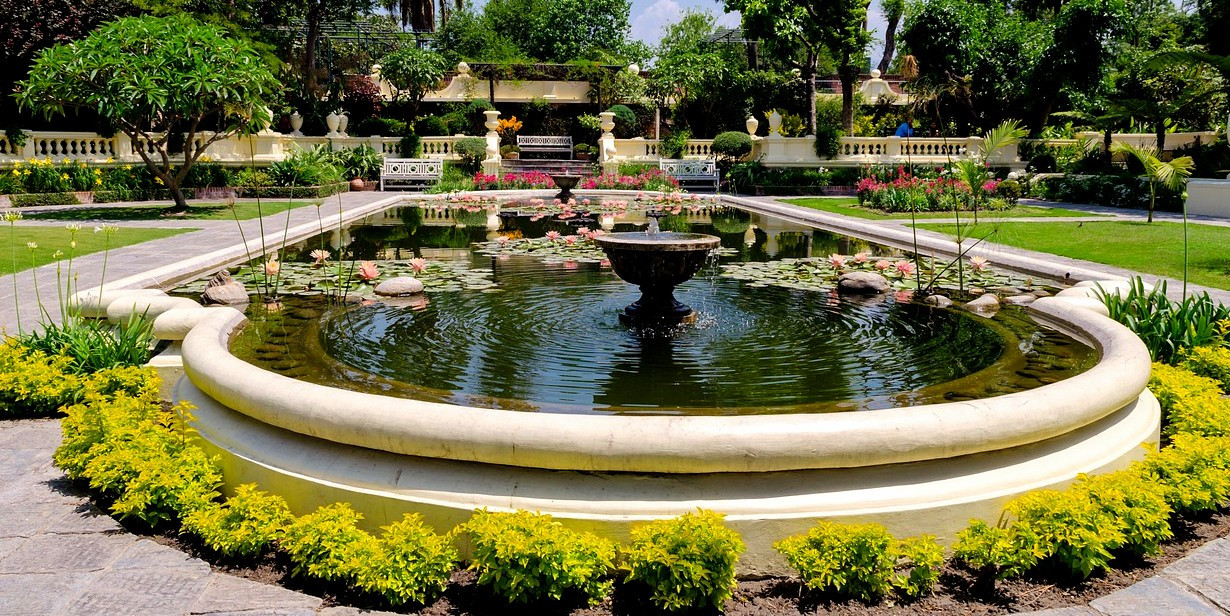
-
Historical Background: The Garden of Dreams was created in the early 20th century by Field Marshal Kaiser Sumsher Rana after his visit to the Edwardian estates of England. It originally spanned over 6,895 square meters and was designed by Kishore Narshingh, a prominent architect who envisioned a landscape that would reflect the sophistication and elegance of those European gardens.
-
Architectural and Botanical Features: The garden's design includes pavilions, amphitheaters, pergolas, and urns, all set around a central pond. It features an array of exotic flora, intricately designed walkways, and decorative garden furniture that invites visitors to sit and admire the surroundings. The architecture is a blend of Eastern and Western styles, with classical pavilions that house fountains, statues, and basins, creating a sense of an Edwardian garden away from home.
-
Restoration and Modern Use: After years of neglect, the Garden of Dreams underwent extensive restoration with the support of the Austrian government and was reopened to the public in 2007. Today, it operates not only as a public garden but also as a venue for private events like weddings, cultural functions, and corporate gatherings. It includes amenities such as a sophisticated café that offers fine dining amidst the lush greenery, enhancing the overall visitor experience.
-
A Cultural Venue: The Garden of Dreams hosts various cultural events, including music concerts, literary readings, and art exhibitions, which align with its historical and aesthetic significance. These events attract a culturally inclined crowd and add to the garden's role as a cultural hub in Kathmandu.
-
Educational and Environmental Impact: The garden serves as an educational resource where people can learn about horticulture and the preservation of historical landscapes. It also plays a critical role in environmental conservation within the urban setting of Kathmandu, providing a habitat for birds and a variety of plant species.
-
Visitor Experience: Visitors to the Garden of Dreams can expect a peaceful escape from the urban chaos. The garden is a perfect spot for reading, relaxing, or simply enjoying the meticulous landscaping. It offers a picturesque backdrop for photography and is a favorite among couples for its romantic setting.
The Garden of Dreams stands as a testament to the visionary design and cultural amalgamation of the past, offering a blend of history, architecture, and tranquility. It is a must-visit for anyone seeking a peaceful break in Kathmandu, providing a unique blend of cultural heritage and natural beauty.
Changu Narayan Temple
Changu Narayan Temple, located near Bhaktapur in the Kathmandu Valley, is the oldest Hindu temple in Nepal, revered for its rich history and exquisite artistry. This temple, dedicated to Lord Vishnu, stands atop a hill surrounded by forest and offers panoramic views of the surrounding countryside, making it not just a spiritual destination but also a scenic attraction.
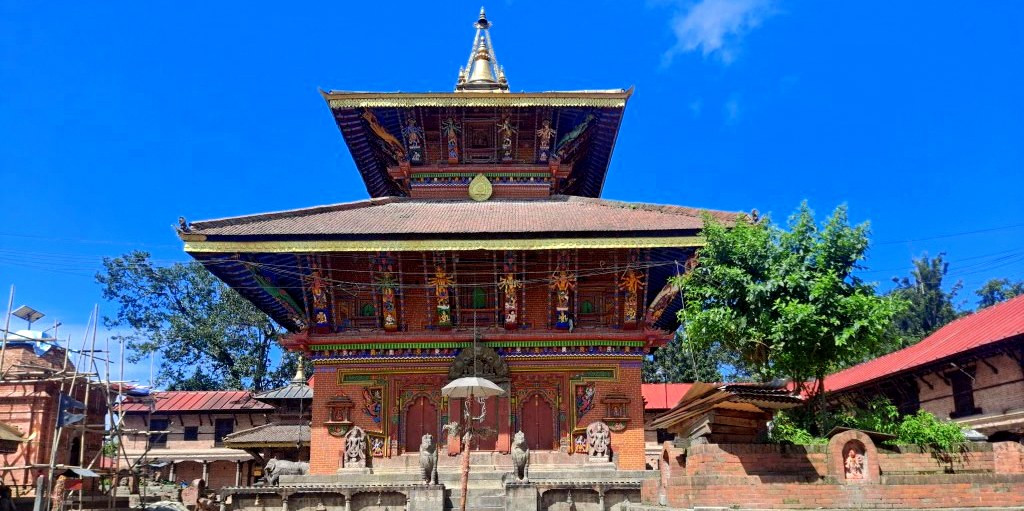
-
Historical Significance: The origins of Changu Narayan Temple trace back to the early 4th century, making it one of the most ancient heritage sites in Nepal. The temple is considered a classic example of Nepalese temple architecture and has been an important pilgrimage site for both Hindus and Buddhists for centuries. The site's history is marked by several reconstructions due to damage from fires and earthquakes, with the current structure reflecting a rebuild from the early 18th century.
-
Architectural Features: Changu Narayan Temple showcases the refined Newari architecture of the Licchavi period, noted for its richly decorated wooden roof struts that feature carvings of various incarnations of Vishnu. The temple's double-roofed structure is adorned with intricately carved stone and woodwork, metal inscriptions, and detailed artworks that depict legends from Hindu mythology.
-
Cultural and Artistic Importance: The temple complex houses an impressive collection of sculptures and carvings dating from the Licchavi period to the Malla period, offering a glimpse into the artistic heritage of ancient Nepal. These artworks include statues of Vishnu in his various incarnations, as well as other deities and mythical figures. Each piece tells a story, contributing to the temple's role as a living museum of Hindu art.
-
Festivals and Rituals: Changu Narayan Temple is the site of various Hindu rituals and celebrations throughout the year. Major festivals celebrated here include Haribodhini Ekadashi and Jugadi Nawami, where rituals are performed that highlight the temple's spiritual significance and bring together the community in celebration.
-
Visitor Experience: Visitors to Changu Narayan Temple can explore the ancient cultural artifacts on display, enjoy the tranquil environment, and participate in or observe the daily rituals and offerings made by devotees. The temple's hilltop location provides a quiet retreat from the busier sites in the valley and offers stunning views, especially at sunrise and sunset.
Changu Narayan Temple remains a pivotal part of Nepal's cultural and spiritual landscape, offering insights into the ancient traditions and religious practices of the region. It is a must-visit for anyone interested in the history, architecture, and religion of Nepal.
Nagarkot
Nagarkot, nestled on the northeastern fringe of the Kathmandu Valley, is renowned for its stunning Himalayan views, including breathtaking panoramas of Mount Everest and the entire Langtang range. This small hilltop village, located about 32 kilometers east of Kathmandu, is a popular escape for both locals and tourists seeking natural beauty and tranquility.
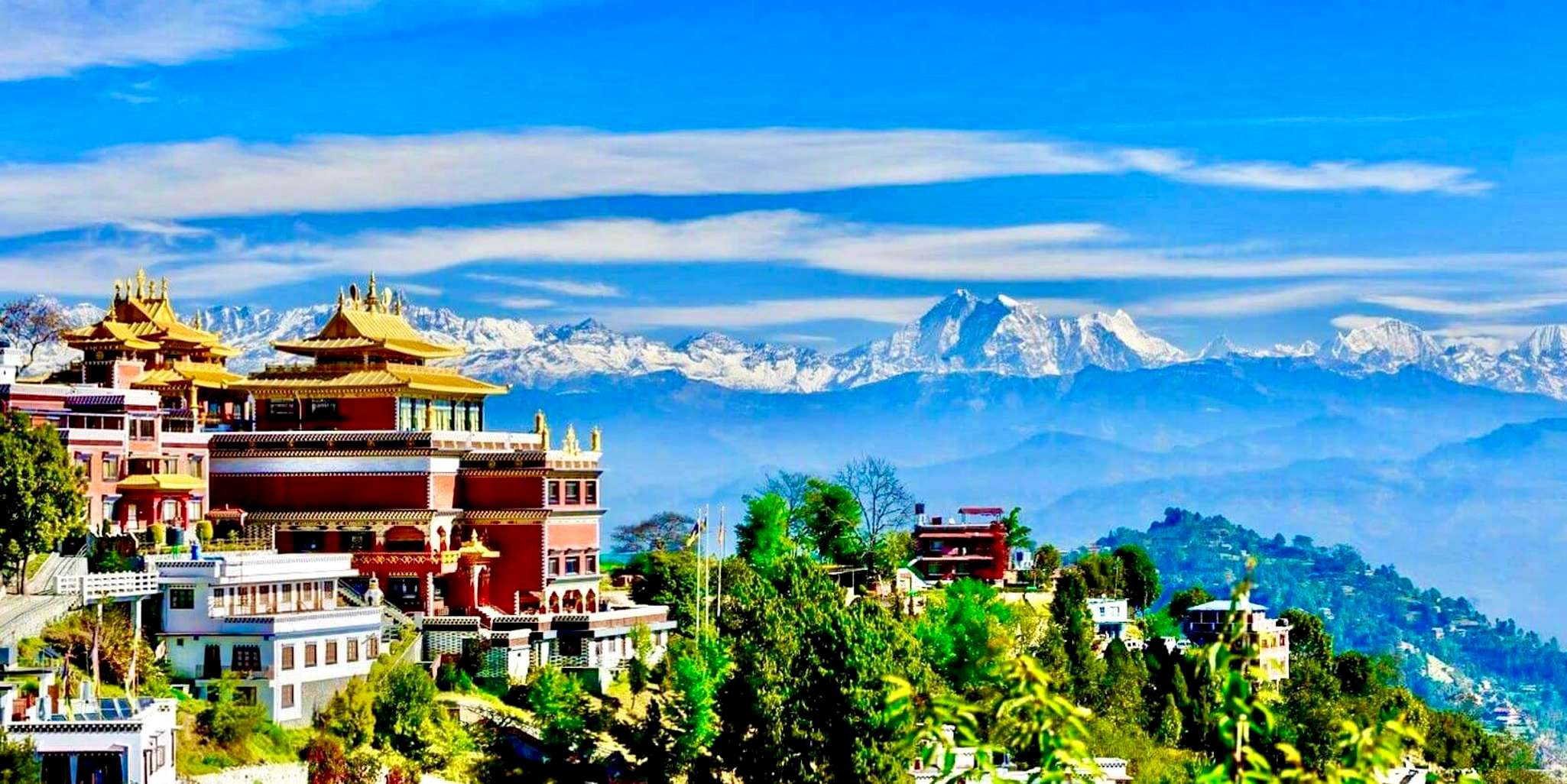
-
Scenic Beauty and Panoramic Views: Nagarkot is best known for its spectacular sunrises and sunsets, when the skies and mountains are painted in vibrant colors. On a clear day, visitors can enjoy a 360-degree view of the majestic Himalayan peaks. The vantage points around Nagarkot offer some of the best opportunities to see Mount Everest and other peaks from a distance, making it a photographer’s paradise.
-
Ideal Base for Trekkers: Nagarkot is also a favored starting point for many treks into the surrounding areas. Popular trekking routes from Nagarkot include paths to Chisapani, Dhulikhel, and Sundarijal. These treks offer more than just exercise; they are cultural experiences that weave through local villages and alongside ancient temples and lush landscapes.
-
Climate and Best Time to Visit: The best times to visit Nagarkot are from October to December and from March to April when the weather is clear and dry, providing the best mountain views. The area experiences a cool climate most of the year, which can be a refreshing break from the heat of lower altitudes.
-
Accommodations and Amenities: Over the years, Nagarkot has developed a well-rounded infrastructure to cater to tourists. There are a range of accommodations, from luxury hotels to cozy guesthouses, most offering impressive views of the Himalayas from their rooms. Many of these establishments also provide amenities like guided tours, hiking excursions, and local cultural programs.
-
Environmental and Cultural Impact: As tourism has grown, so has the need for sustainable practices to preserve the natural and cultural integrity of the area. Local businesses and community leaders are increasingly aware of the importance of sustainable tourism, which respects the natural environment and contributes to the well-being of local communities.
-
Visitor Experience: Visitors to Nagarkot are treated not only to its natural splendor but also to the warm hospitality of its residents. The tranquil pace of life here offers a stark contrast to the bustling energy of Kathmandu, making Nagarkot a perfect retreat for relaxation and rejuvenation.
Nagarkot remains a jewel in the crown of Nepal’s tourist attractions, offering solitude and a deep connection with nature alongside awe-inspiring views of the world's tallest peaks. It provides a unique perspective on the vastness of the Himalayas, accessible yet serene, inviting travelers to bask in its scenic beauty and peaceful ambiance.
Tips for Best Places to Visit in Kathmandu Valley
Visiting the Kathmandu Valley can be an enriching and memorable experience, filled with historical insights, cultural immersion, and breathtaking landscapes. To make the most of your trip, here are some essential tips for exploring the best places in the Kathmandu Valley:
Plan Around the Weather: The best time to visit Kathmandu Valley is during the spring (March to May) or autumn (September to November) when the weather is pleasant, and the skies are clear, providing the best views of the Himalayas. Avoid the monsoon season (June to August) as heavy rains can disrupt travel plans.
-
Dress Respectfully: When visiting religious sites like temples and stupas, dress conservatively to respect local customs. This means covering shoulders and knees and removing shoes before entering temple premises.
-
Stay Hydrated and Protected: The sun can be quite strong, especially at higher altitudes like Nagarkot. Wear sunscreen, sunglasses, and a hat, and carry a water bottle to stay hydrated throughout the day.
-
Early Morning Visits: Plan to visit popular sites like Pashupatinath Temple, Swayambhunath Stupa, and Nagarkot early in the morning to avoid crowds and to witness ritual practices and breathtaking sunrises.
-
Carry Cash: While major tourist areas accept credit cards, smaller shops, local markets, and rural areas may only accept cash. It's also handy for tipping guides and small purchases.
-
Respect Local Customs and Traditions: The Kathmandu Valley is rich in cultural heritage. Show respect by asking permission before taking photographs, especially of religious ceremonies or local people.
-
Explore Local Cuisine: Don’t miss out on traditional Nepali dishes like dal bhat (rice and lentils), momo (dumplings), and thukpa (noodle soup). Local eateries and street vendors offer authentic tastes that are often better than tourist-oriented restaurants.
-
Use Local Guides: Hiring a local guide can enhance your experience as they provide insights into the history and culture that you might otherwise miss. They can also assist in navigating less touristy areas.
-
Prepare for Altitude: If heading to higher areas like Nagarkot, it’s important to acclimatize and prepare for cooler temperatures, even if it's warm in Kathmandu city.
-
Be Ready for Crowds: Kathmandu can be crowded, especially in tourist hotspots. Be patient, embrace the bustling atmosphere, and keep your belongings secure.
-
Plan for Transportation: Traffic in Kathmandu can be chaotic. Plan extra time for travel between destinations. Consider hiring a private car or using reputable taxis for convenience, especially if traveling outside the city.
-
Visit the Lesser-Known Gems: While the major sites are a must-see, don't overlook lesser-known attractions like the Garden of Dreams for relaxation or the local markets for unique crafts.
By following these tips, you’ll be well-prepared to navigate the Kathmandu Valley and enjoy all the cultural, historical, and natural beauty it has to offer. Whether you're exploring ancient temples or hiking through scenic landscapes, Kathmandu Valley promises an adventure that is both awe-inspiring and deeply enriching.
Mixing cultural history, ancient customs, and natural beauty, the Kathmandu Valley provides a varied and enriching encounter. From the ancient Durbar Squares to the hallowed Swayambhunath and Pashupatinath temples and the peaceful heights of Nagarkot, every location offers a different view of the core of Nepal. Kathmandu Valley is a location that offers unforgettable events and long-lasting memories, therefore every trip is worthwhile whether you want spiritual depth, historical knowledge, or natural beauty.
FAQs for Best Places to Visit in Kathmandu Valley
Q: What are the top places to visit in Kathmandu Valley?
A: The must-visit sites include Kathmandu Durbar Square, Patan Durbar Square, Bhaktapur Durbar Square, Swayambhunath Stupa (Monkey Temple), Boudhanath Stupa, Pashupatinath Temple, Thamel, and Nagarkot, each offering unique cultural and historical experiences.
Q: What is the best time to visit Kathmandu Valley?
A: The optimal times to visit are during the spring (March to May) and autumn (September to November) when the weather is favorable for sightseeing and outdoor activities.
Q: How many days are needed to explore Kathmandu Valley?
A: Ideally, allocate 3 to 5 days to explore the major attractions thoroughly, allowing half a day or more for each significant site.
Q: Is it safe to travel in Kathmandu Valley?
A: Yes, it is generally safe for tourists. However, usual travel precautions regarding personal safety and belongings should be observed.
Q: What cultural norms should visitors be aware of when visiting temples?
A: Dress modestly, covering shoulders and knees, remove shoes before entering temple areas, do not touch sacred objects, and always ask for permission before taking photos, especially of people or during religious ceremonies.
Q: Are there good accommodations and dining options in Kathmandu Valley?
A: Yes, there are diverse accommodations ranging from budget hostels to luxurious hotels, and numerous dining options offering local and international cuisine.
Q: How do I get around Kathmandu Valley?A: Local transportation options include buses, taxis, and rickshaws. For ease and safety, many tourists opt for private vehicles or guided tours, particularly for traveling to sites outside Kathmandu city.
Q: Can I hike in Kathmandu Valley?
A: Yes, there are several scenic hiking trails, such as those leading to Nagarkot and Shivapuri National Park, which provide stunning views and encounters with local wildlife.
Q: What should I buy in Kathmandu Valley?
A: Popular purchases include Thangka paintings, handmade paper products, Pashmina shawls, and crafted silver jewelry, with Thamel being a prime shopping destination for these items.
Q: Are there any health concerns I should be aware of?
A: Drink only bottled or purified water to avoid waterborne illnesses, exercise caution with street food, and consult health professionals for recommended vaccinations before traveling.
For the Nepal tour, please click here.
If you are looking for different kinds of Nepal Tours or Trekking Packages, feel free to contact us.
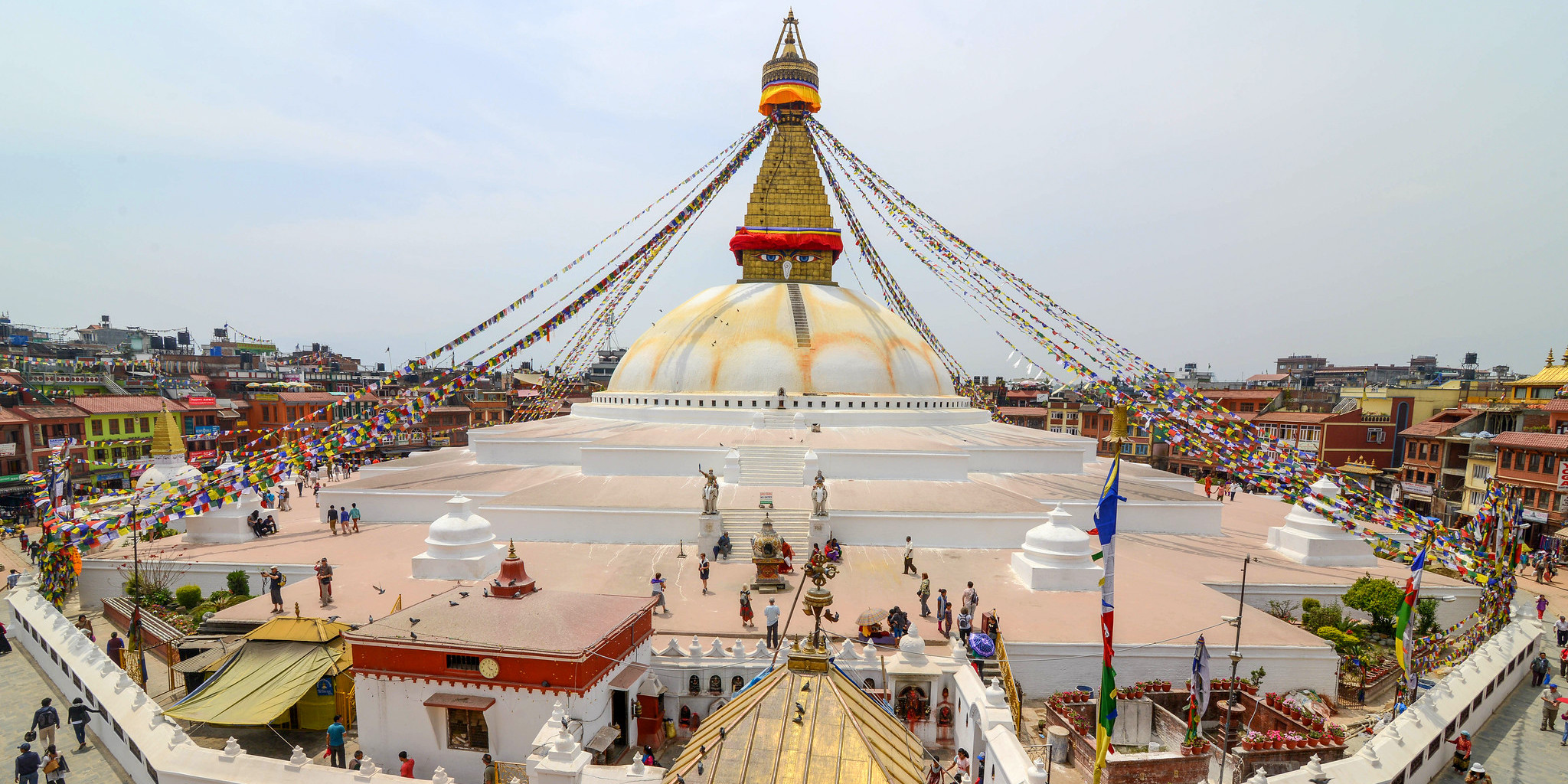




.jpg)






